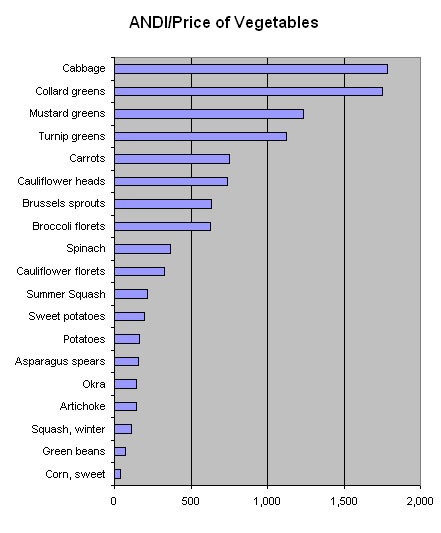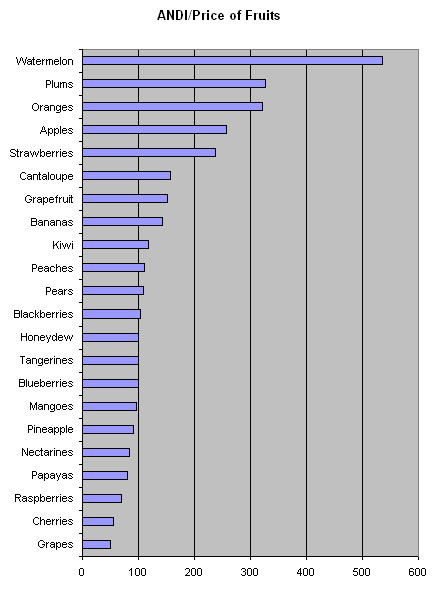 Yesterday, Jen posted on getting the most bang for your buck in the produce section. By comparing the price-per-cup of various fruits and vegetables to their ANDI score, she arrived at a rough ranking of the best, cheapest sources to get your vitamins.
Yesterday, Jen posted on getting the most bang for your buck in the produce section. By comparing the price-per-cup of various fruits and vegetables to their ANDI score, she arrived at a rough ranking of the best, cheapest sources to get your vitamins.
(Note: neither of us is totally sold on the ANDI scoring method, but it at least provides some food for thought—pardon my pun.)
She didn’t have time to track down the whole list, but I did.
Here are veggies:

And here are fruit:

(Note: These figures were arrived at by dividing each item’s ANDI score by the average price per pound provided by the USDA—found here in Jen’s post.)
Jen already highlighted the smart choices: cabbage, leafy greens, carrots, and cauliflower for veggies, and watermelon, plums, oranges, and apples for fruit.
What shouldn’t you waste your money on? I wasn’t surprised to see corn on the bottom—fresh corn is often expensive and it’s starch-laden interior lacks much in the way of nutrients. Green beans, winter squash, and artichokes all ended up at the bottom, too. Potatoes didn’t rank as badly as I expected, but that’s just because they’re so darn cheap.
For fruit, grapes came in dead last—not shocking since they’re largely water. The most expensive fruit, raspberries, came in third, and despite being cheap nectarines landed in fifth.
For the most part, it’s all pretty intuitive. The things Mom always tried to get us to eat—like greens and brussels sprouts—look pretty good. But let’s be honest: if you’re fretting the choice between broccoli and okra—and not between Cap’n Crunch and SpaghettiO’s—you’re already way ahead of the curve.
Cabbage photo by Sightline staffer Migee Han.

Comments are closed.